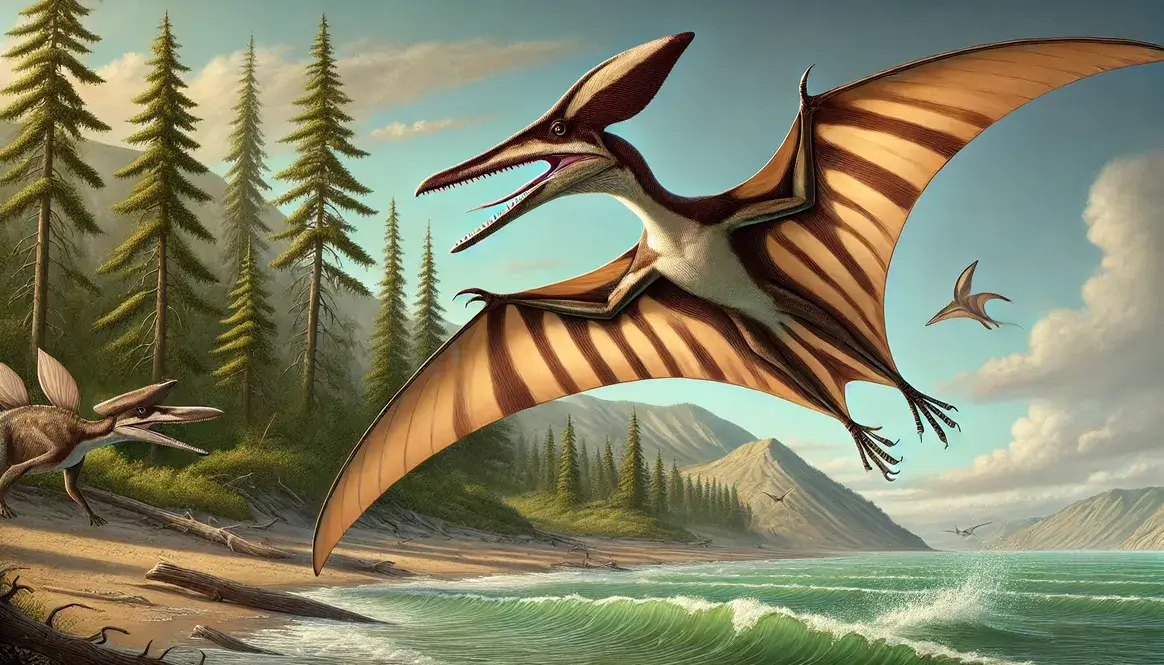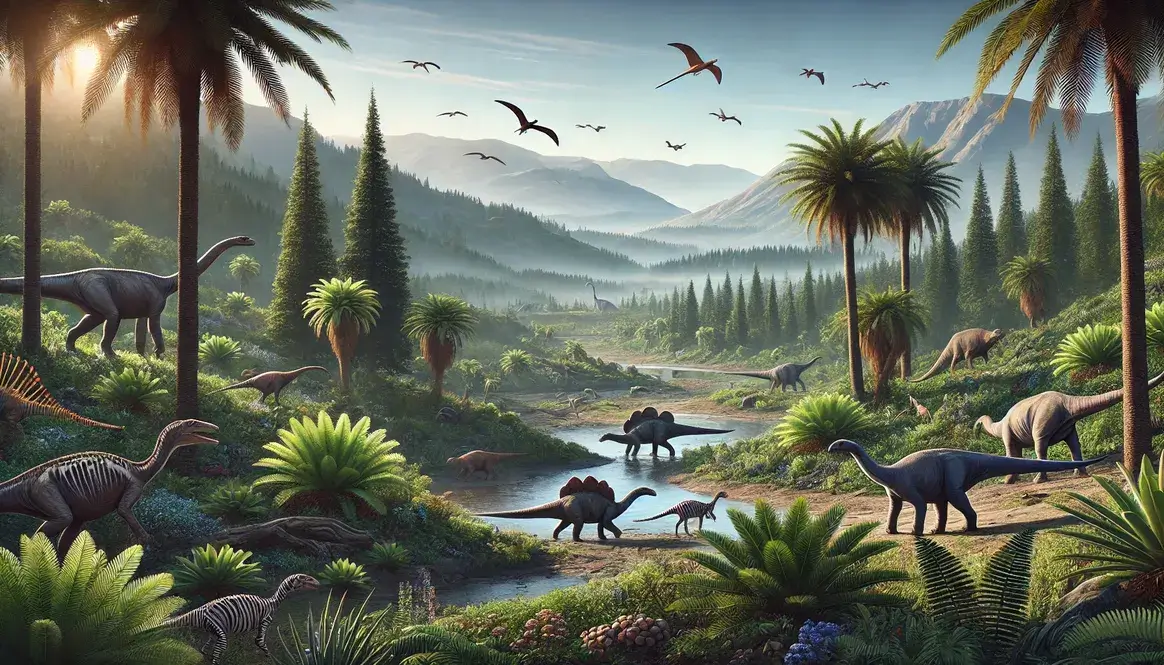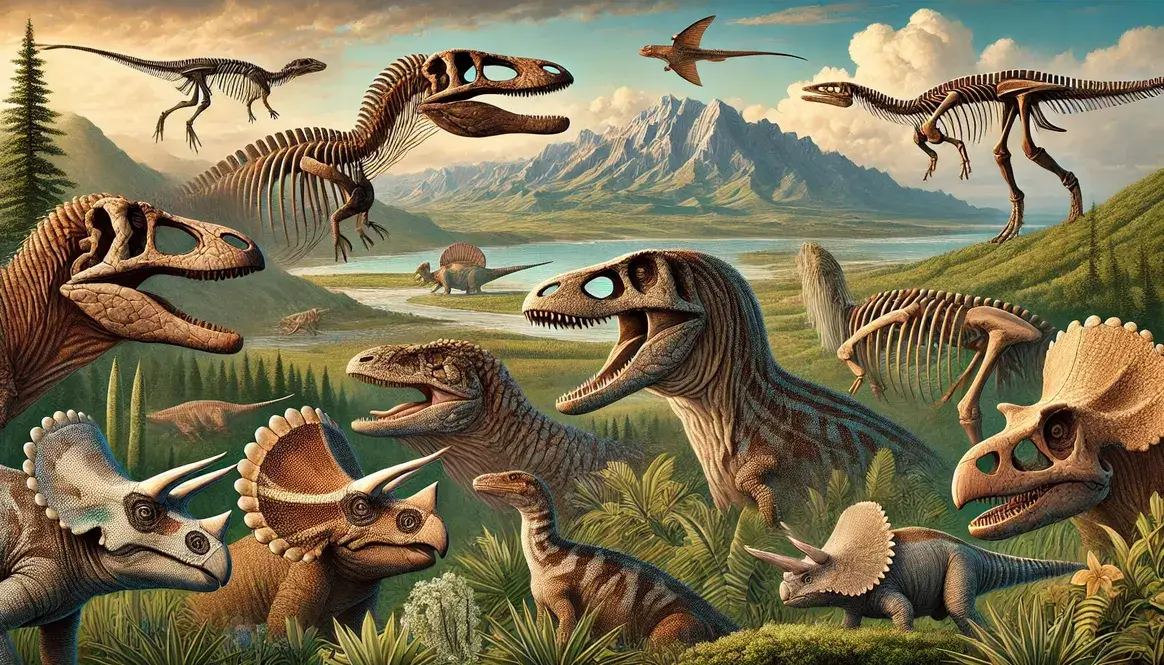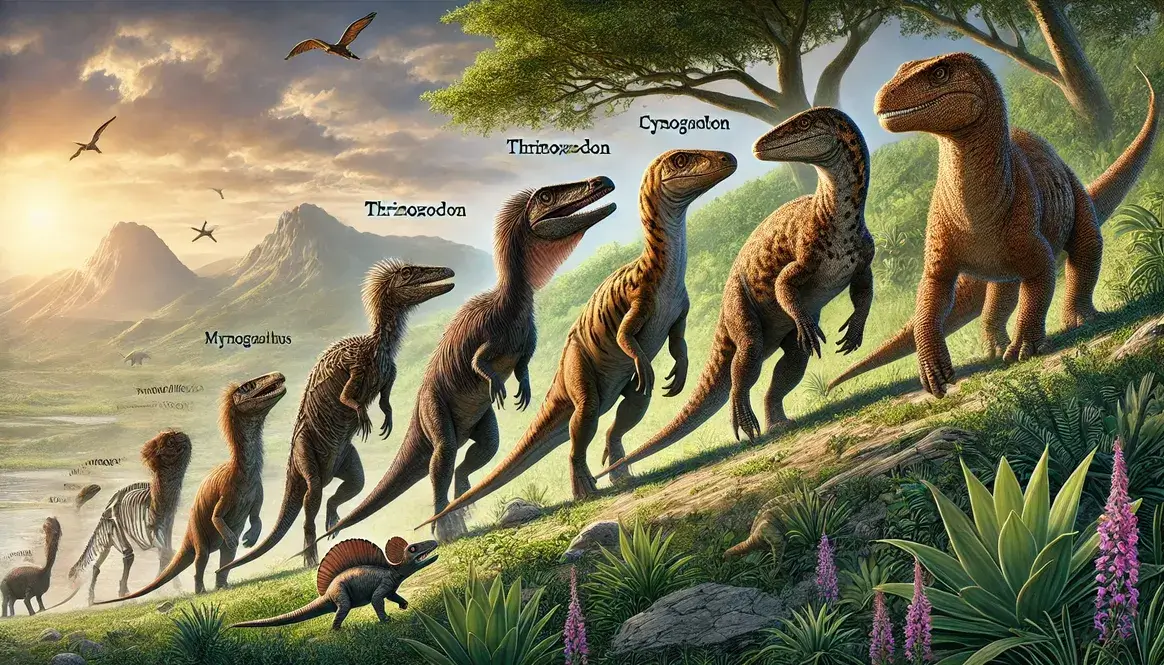Imagine a world where no creatures ruled the skies. That’s exactly what Earth was like before the first pterosaurs took to the air. The Triassic period, which began about 252 million years ago, set the stage for these incredible flying reptiles.
During this time, Earth was recovering from a massive extinction event. The Triassic climate was warm and dry, with no polar ice caps. Forests of conifers and ferns covered the land, while the oceans teemed with new forms of life. It was in this world of opportunity that the first pterosaurs would evolve.
Ancestors of the Sky: The Pre-Pterosaur Era
Before pterosaurs spread their wings, their ancestors were already on an evolutionary journey towards the skies. These early reptiles were part of a diverse group of animals adapting to life in the Triassic world. Let’s take a closer look at these pre-pterosaur pioneers and what drove them to eventually take flight.
Reptilian Relatives
Before we had pterosaurs soaring through the air, their ancestors were scurrying around on the ground. These early reptiles were likely small, agile creatures that lived in trees or rocky areas. They belonged to a group called archosaurs, which also gave rise to early Triassic dinosaurs and crocodiles.
One possible relative of pterosaurs was a small reptile called Scleromochlus. This little guy was about the size of a house cat and had long legs, perfect for hopping around. While it couldn’t fly, it might give us clues about what the ancestors of pterosaurs looked like.
Evolutionary Pressures
So, what made these reptiles want to take to the skies? Several factors likely pushed them towards flight:
- Food sources: Flying insects were abundant, offering a tasty meal for any creature that could catch them.
- Predator avoidance: Being able to escape into the air would have been a great way to avoid being eaten.
- New habitats: Flight opened up new places to live and new resources to exploit.
These pressures led to some major changes in our pre-pterosaur pals. Their bones became hollow to reduce weight, their forelimbs grew longer, and their muscles adapted to power flight.
The Emergence of First Pterosaurs
After millions of years of evolution, the stage was set for the arrival of the first true pterosaurs. These pioneers of the sky would mark the beginning of a new era in Earth’s history, as vertebrates took to the air for the first time. Let’s explore the earliest evidence we have of these fascinating creatures.
Earliest Known Pterosaur Fossils
The first pterosaurs didn’t leave behind a calling card saying, “We were here!” Instead, we have to piece together their story from fossil evidence. The oldest known pterosaur fossils come from the late Triassic period, about 220 million years ago.
One of the earliest pterosaurs we’ve found is called Eudimorphodon. This little flyer had a wingspan of about 3 feet (1 meter) and sharp, pointy teeth perfect for catching fish or insects.
Dating the First Pterosaurs
While our oldest pterosaur fossils are from about 220 million years ago, scientists think pterosaurs might have evolved even earlier. Based on genetic studies of modern reptiles and birds, some researchers estimate that pterosaurs could have appeared as early as 240 million years ago.
This table shows the timeline of pterosaur evolution:
| Time Period | Event |
|---|---|
| 252 million years ago | Triassic period begins |
| ~240-230 million years ago | Estimated origin of pterosaurs |
| ~220 million years ago | Oldest known pterosaur fossils |
| 201 million years ago | Triassic period ends |
Anatomy of Early Pterosaurs
Now that we’ve met the first pterosaurs, let’s take a closer look at what made these creatures so special. The anatomy of early pterosaurs was unlike anything that had come before, with unique adaptations that allowed them to conquer the skies. From their wings to their teeth, every part of their body was designed for life in the air.
Wings and Flight Adaptations
The first pterosaurs had a unique wing structure unlike anything we see today. Their wings were made of a thin membrane of skin, muscle, and other tissues. This membrane stretched from an extremely long fourth finger all the way to the ankle.
Here’s a quick comparison of pterosaur wings to other flying animals:
| Feature | Pterosaurs | Birds | Bats |
|---|---|---|---|
| Wing material | Skin membrane | Feathers | Skin membrane |
| Wing support | Single long finger | Entire arm | All fingers |
| Body covering | Hair-like structures | Feathers | Fur |
Skull and Jaw Features
Early pterosaurs had long, narrow skulls with lots of sharp teeth. Their jaws were hinged in a way that allowed them to open wide, perfect for snatching prey out of the air or water. Some pterosaurs, like Eudimorphodon, even had different types of teeth for different functions — kind of like having a built-in Swiss Army knife in their mouths!
Body Structure and Size
The first pterosaurs were generally small, about the size of a seagull or crow. They had hollow bones, just like modern birds, which helped keep them light for flight. Their bodies were covered in hair-like structures called pycnofibers, which probably helped with insulation and streamlining.
Despite their small size, these creatures were the start of something big. Over millions of years, pterosaurs would evolve into a wide range of shapes and sizes, eventually including giants with wingspans of over 30 feet!
Ecological Niches of First Pterosaurs
The Triassic skies were a new frontier, and the first pterosaurs were its pioneers. These early flyers didn’t just take to the air for the thrill of it; they carved out unique roles in their ecosystems, filling gaps that no other animals could. Their arrival marked a significant shift in the dynamics of Mesozoic life.
Feeding Habits and Diet
Early pterosaurs were opportunistic eaters, their diets as varied as their habitats. Many species, with their sharp, needle-like teeth, excelled at snatching insects mid-flight. Others, like Eudimorphodon, sported specialized dentition perfect for catching slippery fish. Some larger pterosaurs might have even preyed on small land-dwelling reptiles, adding a new threat from above to the Triassic food web.
Interestingly, the diversity in tooth shapes among early pterosaurs hints at dietary specialization. This adaptation to different food sources likely played a crucial role in their ability to thrive in various environments, including the rich ecosystems inhabited by Triassic sea creatures.
Habitat and Distribution
While pterosaurs would eventually soar over every continent, the first species had a more limited range. Fossil evidence suggests they preferred coastal areas and islands, taking advantage of sea breezes and abundant marine life. Some ventured inland, inhabiting areas around lakes and rivers.
Early pterosaur fossils have been unearthed in Europe, Greenland, and possibly South America, indicating an origin in the northern part of Triassic Pangaea. This distribution paints a picture of creatures adapting to diverse landscapes, from rocky coastlines to lush inland forests populated by Triassic plants.
Key Fossil Discoveries
The story of early pterosaurs is written in stone – quite literally. Fossil discoveries have been crucial in piecing together the tale of these ancient flyers, offering glimpses into their appearance, behavior, and evolution.
Important Early Pterosaur Species
Three key species have shaped our understanding of early pterosaurs:
- Eudimorphodon: Found in Italy, this species is one of the oldest known pterosaurs. Its varied dentition suggests a diverse diet, hinting at the adaptability that would become a hallmark of pterosaur success.
- Preondactylus: Also from Italy, this small pterosaur had a wingspan of just 45 cm. Its long, thin snout filled with sharp teeth paints a picture of an agile insect hunter.
- Peteinosaurus: Another Italian find, this tiny flyer had a wingspan of only 60 cm, making it one of the smallest known early pterosaurs.
These fossils have been invaluable in revealing the diversity of early pterosaurs and their adaptations to different lifestyles. They are among the famous Triassic fossils that have shaped our understanding of this fascinating period.
Fossil Locations and Preservation
The rarity of pterosaur fossils makes each discovery precious. Their hollow, fragile bones were less likely to fossilize than those of their land-dwelling contemporaries. Yet, against the odds, several key locations have yielded crucial specimens:
- The Italian Alps have been a treasure trove, preserving early pterosaurs in fine-grained marine limestone.
- Greenland’s fossils suggest a wider distribution than previously thought.
- Controversial finds in Brazil hint at an even broader range, though debate continues among paleontologists.
The best-preserved specimens often come from ancient lakebeds or lagoons, where fine sediments gently embraced fallen pterosaurs, preserving their delicate structures for millions of years.
Early Pterosaur Diversity and Evolution
As the Triassic progressed, pterosaurs didn’t rest on their laurels. They continued to evolve and diversify, exploring new niches and adapting to challenges. This period of early evolution set the stage for the incredible variety of pterosaurs that would dominate the skies in later eras.
Variations Among First Pterosaurs
Even in their early days, pterosaurs showed remarkable diversity. Wingspans ranged from a mere 25 cm to over a meter, allowing different species to exploit various ecological niches. Skull shapes varied too, from long, thin snouts perfect for probing for insects, to shorter, more robust skulls suited for tackling larger prey.
This diversity in early pterosaurs demonstrates their adaptability and hints at the evolutionary potential that would lead to their long-term success. It’s a testament to the incredible diversity of life that emerged during the Triassic, alongside other groups like the ancestors of Triassic mammals.
Evolutionary Trends
As pterosaurs evolved, several trends emerged:
- Many lineages grew larger over time, eventually leading to giants with wingspans over 10 meters.
- Later pterosaurs often had fewer teeth or became completely toothless, developing other feeding adaptations.
- Flight efficiency improved through changes in wing shape and body structure.
These changes paved the way for the incredible diversity of pterosaurs that would rule the skies in the Jurassic and Cretaceous periods.
The Legacy of First Pterosaurs
The first pterosaurs were more than just flying reptiles; they were revolutionaries. By taking to the air, they changed the rules of the game for Mesozoic life. They were the first vertebrates to achieve powered flight, beating birds to the punch by over 50 million years.
This aerial innovation opened up entirely new niches and transformed predator-prey relationships. Suddenly, no place was safe from these winged hunters. Their success led to an explosion of pterosaur diversity, evolving into an astonishing array of forms over the next 150 million years.
But perhaps the most important legacy of the first pterosaurs is what they teach us about evolution. They demonstrate life’s extraordinary ability to adapt and innovate, given the right conditions and pressures. The story of the first pterosaurs is a testament to the incredible journey of life on Earth, full of unexpected leaps into new realms.
As we continue to unearth new fossils and develop new technologies to study them, who knows what other secrets we’ll uncover about these pioneers of the prehistoric skies? The first pterosaurs may be long gone, but their legacy lives on in every bird that graces our skies today. Their story is just one fascinating chapter in the larger narrative of what Earth was like in the Triassic, a world teeming with life and full of evolutionary surprises.









